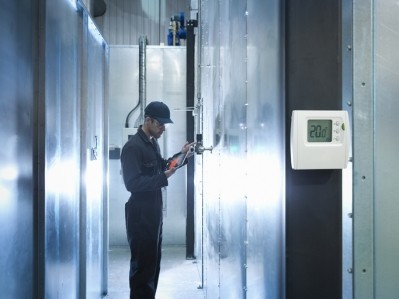ADM sets 2035 emissions, energy reduction targets

The Illinois-based grain trader announced Tuesday [March 31] that, by 2035, it intends to have lowered its absolute greenhouse gas emissions by 25% and reduced energy intensity by 15%.
Those targets are an expansion of an initiative that began in 2011. and which sought to limit the company’s emission intensity by 15% by 2020, addressing energy use, greenhouse gas emissions, water, and waste sent to landfills. ADM said it met those targets earlier than anticipated and, thus, started work on the new measures.
Scope 1, scope 2 emissions
Greenhouse gas (GHG) emissions can be considered in three scopes with scope 1 emissions being direct emissions from owned or controlled sources, according to the GHG Protocol Corporate Standard.
Scope 2 emissions are indirect emissions like those resulting from the generation of purchased energy.
“After commissioning a third-party feasibility study, our leadership chose to set an ambitious goal to reduce our absolute Scope 1 and 2 greenhouse gas emissions by 25% from its 2019 baseline by 2035,” Allison Taylor, chief sustainability officer, Archer Daniels Midland Company (ADM) told FeedNavigator. “This represents an average annual reduction of 1.67% for 15 years.”
The company established a carbon reduction task force in 2019 to find projects that could reduce ADM’s global greenhouse gas emission footprint, she said. “As a global enterprise, climate change is an issue that has implications for ADM employees, stakeholders, the communities in which we operate, and all aspects of our business,” she added.
Connection to global climate plans
ADM’s work to reduce emissions and lower its carbon footprint are part of the company’s response to global discussion on climate change and interest in keeping the average global temperature increase to less than 2°C – the amount indicated to “prevent the worst effects of climate change,” said Taylor.
“This threshold implies a ‘carbon budget’ – a total volume of greenhouse gases that can be emitted while still providing a degree of confidence that the 2°C target can be met,” she said. “According to figures from the Intergovernmental Panel on Climate Change (IPCC), this requires a 41- 72% reduction of global emissions by 2050.”
Program creation and highlights
To establish targets for emissions reductions going forward, ADM conducted a feasibility study in partnership with the engineering professional services firm, WSP Global, Taylor said. The intention of that project was to “determine how ambitious our goals can be while still maintaining a pragmatic, realistic approach.”
“These goals are backed by a thoughtful study of current technology capabilities, growth projections and the commitment of our leadership and employees,” she added.
Progress toward the sustainability goals will be reported annually in the company’s sustainability report and through the Carbon Disclosure Project, she said.
“We have identified three key strategies to reach a GHG reduction target of 25% and energy intensity by 15% over 15 years,” she said. “Our strategy to achieve the reductions includes purchasing renewable electricity, increasing use of biomass fuels, transportation fleet changes, and in some locations, equipment changes.”
Both moving to use renewable electricity and boosting biofuel use at facilities are intended to reduce the emissions generated, Taylor said. ADM is also assessing the use of biodiesel in company transport vehicles.
“In both stationary and mobile equipment, ADM has opportunities to switch to less carbon-intense fuels,” she said. “Some facilities may feasibly be able to switch to natural gas or co-fire biomass in the boilers.
“We are also assessing the use of liquefied natural gas for our boat fleet and compressed natural gas for our truck fleet in certain geographies,” she added.
During earlier sustainability projects, the company also established the practice of conducting “energy treasure hunts” to find places where energy efficiency could be improved, Taylor said.
“As technology and resource availability develops, new opportunities may allow us to reduce emissions faster than currently expected,” she said. “They may also allow ADM to reduce emissions beyond the 15-year timeframe of our goals, to make continued progress toward a future net-zero emissions scenario.”












